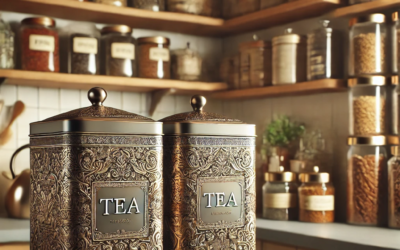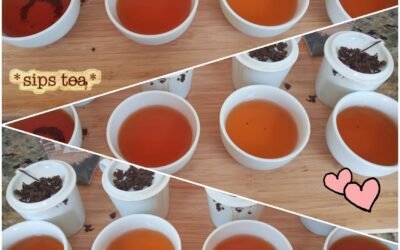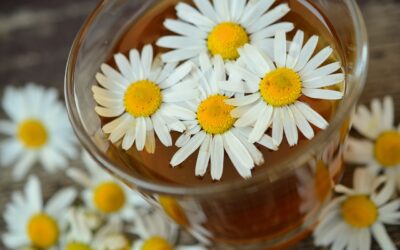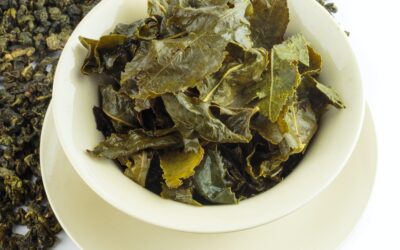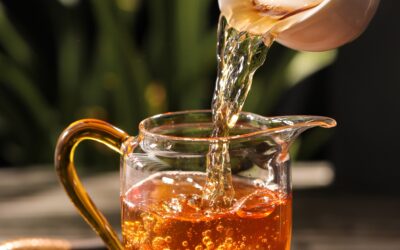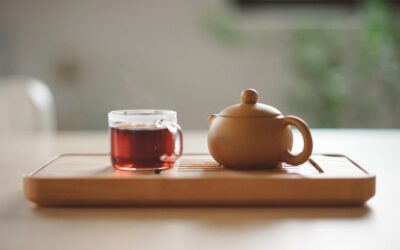Brewing styles and how they can make a big difference in your tea-drinking experience….
I love exploring the art of tea, but sometimes I just don’t have the time and quickness trumps precision.
Allow me to share with you the fascinating world of Western Style and Gongfu Style brewing, and how they stack up against each other.
Let’s start with a little history lesson. Western Style brewing, as the name suggests, has its roots in the West, particularly in countries like England, where tea became popular in the 17th century. It’s all about convenience and simplicity, with a focus on using a teapot or teabag, and a relatively lower leaf to water ratio.
On the other hand, Gongfu Style brewing traces its origins to China, where tea has been revered for centuries as a symbol of art, culture, and hospitality. The term “Gongfu” translates to “skillful work” or “artful skill,” indicating the intricate and labor-intensive nature of this brewing style. It involves using a small teapot or gaiwan, and the emphasis is on maximizing the flavors and aromas of the tea through precise brewing techniques and a higher leaf to water ratio.
In addition to Western Style and Gongfu Style, there are two other interesting brewing styles that are worth mentioning – Grandpa Style and Bowl Style.
Grandpa Style
This style is all about simplicity and informality. It involves adding tea leaves directly to a cup and pouring hot water over them, allowing the leaves to steep and sink to the bottom. It’s a laid-back way of enjoying tea, where you can sip on the tea while leaving the leaves in the cup. It’s often used for teas with larger leaves or tightly rolled leaves that unfurl as they steep.
Bowl Style
As the name suggests, this style involves brewing tea in a bowl. It’s a traditional Japanese method where matcha or powdered green tea is whisked with hot water to create a frothy, vibrant green beverage. It’s a meditative and ceremonial way of enjoying tea, often used in tea ceremonies and for special occasions.
Alright, let’s delve into details of Western Style and Gongfu Style brewing, and how they differ from each other.
Leaf to Water Ratio – This is where the magic happens! The leaf to water ratio is the key factor that determines the strength and intensity of your tea. In Western Style brewing, a smaller amount of tea leaves is used for a larger amount of water, resulting in a lighter and milder brew with a quicker steeping time. It’s a convenient option when you’re in a hurry or want a quick cup of tea on the go.
On the other hand, Gongfu Style brewing uses a higher leaf to water ratio, where a larger amount of tea leaves is used for a smaller amount of water. This results in a more concentrated and flavorful brew, with a longer steeping time. It requires more attention to detail and precision in brewing, but it can yield a more complex and nuanced cup of tea that unravels in layers of flavors and aromas.
Teaware – Another area where Western Style and Gongfu Style differ is in the teaware used for brewing. In Western Style, you might typically use a teapot or a teabag, making it a straightforward and familiar process. It’s perfect for a quick cuppa in the morning or for serving guests at a brunch gathering.
Gongfu Style brewing often involves using smaller teapots or gaiwans, which are traditional Chinese teaware known for their elegance and craftsmanship. These teapots are designed to hold a smaller amount of water, allowing for better control over the brewing process. The tea leaves are brewed multiple times in short, successive infusions, with each infusion revealing different nuances of the tea’s flavors and aromas. It’s a sensory experience that’s both artistic and scientific, as you experiment with different steeping times, water temperatures, and pouring techniques to coax out the best flavors from the tea leaves.
Time and Attention – Western Style brewing is designed to be quick and convenient, with steeping times ranging from a few minutes to just a few seconds, depending on the type of tea. It’s perfect for busy mornings or when you’re on the go. However, it’s important to keep an eye on the steeping time, as leaving the tea to steep for too long can result in a bitter or astringent taste.
Gongfu Style brewing requires more time and attention. Each infusion is usually shorter, ranging from a few seconds to a minute, and the process involves multiple infusions. It requires careful monitoring of the steeping time, water temperature, and tea leaves-to-water ratio to achieve the desired flavors and aromas. It’s a mindful and meditative process, where you can fully immerse yourself in the art of tea brewing and appreciate the subtle notes of the tea.
In short……, if Western Style was like a casual date, where you enjoy a light and breezy conversation, Gongfu Style will be like a romantic rendezvous, where you delve deep into the depths of the tea’s soul and unravel its mysteries, drawing out its hidden charms sip by sip.
It’s a tea adventure that takes time and patience, but oh, the flavors and aromas that await you are worth every moment!
The style you choose to brew your tea plays a significant role in the flavors and aromas of your tea, and Western Style and Gongfu Style are two fascinating approaches that offer unique experiences. Western Style is convenient and quick, with a lighter and milder brew, perfect for busy mornings or on-the-go sips. Gongfu Style, on the other hand, is an artful and mindful process, with a more concentrated and complex brew that requires time, attention, and precision.
For us women, who lead busy lives and appreciate convenience, but also value quality and mindfulness in our lifestyle choices. Incorporating Western Style and Gongfu Style brewing into our tea routine can be a reflection of our personality – a blend of practicality and appreciation for the finer things in life.



